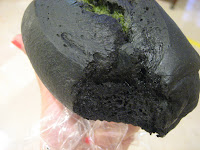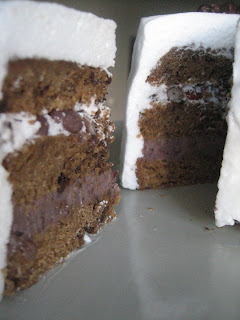Here are three amazing fruits which I have seen for the first time here in China:
 Myrica rubra
Myrica rubra - it is kind of berry, has no skin, but at the same time not, it has a seed. Flesh is sweet, jucy and made of long threads that are waxy a bit on the surface. My favorite new fruit.
 Loquat
Loquat - it looks like a pear but it is completely different. Skin peels off easily, it has 4-5 seeds and flesh is sweet and soft, not crispy like a pear can be.
 White peach
White peach - it smells almost like a regular peach but the flesh is more tender and a bit less juicy. It is quite flat and skin peels off easily by hand. It looks really beautiful.

So having these 3 fruits at hand I decided to make a meringue dessert called pavlova (named after Russian ballerina Anna Pavlova). Australia and New Zealand are still having a dispute over the origin of this dessert, but by pouring a New Zealand raspberry honey over my mini pavlovas I think I have coincidentally chosen a side.
Pavlova
2 egg whites
1,5 dl sugar
1 tsp cornstarch
1 tsp white vinegar
1 tsp vanilla extract
2,5 dl cream
fresh fruits
honey
makes 4 mini pavlovas
Preheat the oven to 120 C. Beat egg whites until soft peaks form, add slowly 1 dl sugar and beat until stiff peaks form. Mix the other 0,5 dl sugar with the cornstarch, add slowly to the meringue and beat until stiff peaks form. Mix in vinegar and vanilla extract.
Make 4 equal meringue circles on the baking paper, with at least 5 cm between each. Bake for 45 minutes, let cool in the oven.
Meanwhile beat the cream and cut the fruits. When pavlovas are cooled, spoon the cream and then fruits on the top. Drizzle some honey over.



































